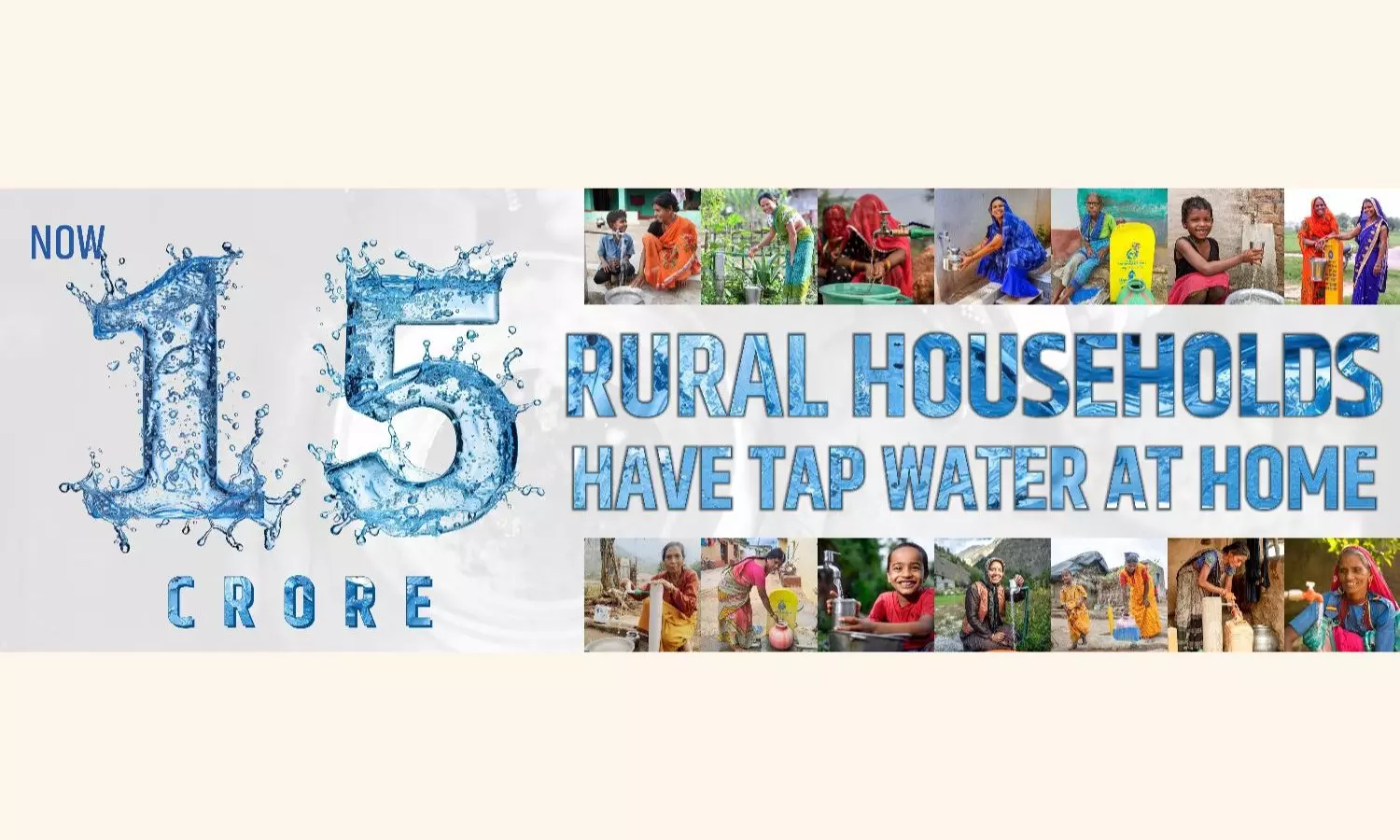Arsenic, fluoride affected habitations reduced significantly in last five years: Centre

New Delhi: The Central government said the number of arsenic and fluoride affected habitats were reduced significantly in the last five years and as many as 2,163 drinking water quality testing laboratories were set up in States. Over 24.61 lakh women trained for testing water using field testing kits across India, according to Union Minister of State for Jal shakti V Somanna in Rajya Sabha.
The Central government, in partnership with States, is implementing Jal Jeevan Mission (JJM) since August, 2019 to provide potable tap water supply in adequate quantity, of prescribed quality and on regular and long-term basis to every rural household in the country.
Drinking water being a State subject, the responsibility of planning, approval, implementation, operation, and maintenance of drinking water supply schemes, including those under the Jal Jeevan Mission, lies with State and Union Territories (UT) governments.
The Centre supports the States by providing technical and financial assistance. At the time of announcement of JJM, 3.23 crore amounting to 17 per cent rural households were reported to have tap water connections.
So far, as reported by States and UTs as on July 31, 2024, around 11.80 crore additional rural households have been provided with tap water connections. Thus, as on July 31, 2024, out of 19.32 crore rural households, in 5.83 lakh villages, in the country, more than 15.03 crore amounting 77.81 per cent households spread in around 5.80 lakh villages, are reported to have tap water supply in their homes.
Further, as on July 31, 2024 around 2.31 lakh villages are reported as “Har Ghar Jal”. Under the JJM, as per existing guidelines, Bureau of Indian Standards’ BIS:10500 standards are adopted as benchmarks for ensuring the quality of water being supplied through the piped water supply schemes.
While planning water supply schemes to provide tap water supply to households, priority is given to quality-affected habitations. While allocating the funds to States and UTs in a particular financial year, 10 per cent weightage is given to the population residing in habitations affected by chemical contaminants including arsenic and fluoride.
Contamination in drinking water sources in rural areas is monitored on habitation wise. Since the launch of JJM, the number of arsenic and fluoride affected habitations has reduced over the years. As reported by States and UTs, as on July 31, there are 316 arsenic and 265 fluoride affected rural habitations in the country.
Provision of potable drinking water for cooking and drinking requirements has been made in all these remaining 316 arsenic–affected and 265 fluoride-affected habitations through Community Water Purification Plants (CWPPs).
As per operational guidelines, States and UTs can utilize upto two per cent of their annual allocation of funds under JJM for Water Quality Monitoring & Surveillance (WQM&S) activities inter alia which includes setting up and strengthening of water quality testing laboratories, procurement of equipment, instruments, chemicals, glassware, consumables, hiring of skilled manpower, surveillance by community using field test kits (FTKs), awareness generation, educational programmes on water quality, accreditation/recognition of laboratories, etc.
To enable States and UTs to test water samples for water quality, and for sample collection, reporting, monitoring and surveillance of drinking water sources, an online JJM – Water Quality Management Information System (WQMIS) portal has been developed.
As reported by States and UTs, so far 2,163 drinking water quality testing laboratories at different levels viz. State, regional, district, sub-division and/or block level, have been set up in the country. To encourage water quality testing to ensure potable drinking water supply, States and UTs have opened water quality testing laboratories to the general public for testing of their water samples at a nominal rate.
A ‘citizen corner’ was also developed on the JJM dashboard. The corner included display of water quality test results in the public domain to further create awareness and build confidence among people about the quality of water supplies through the PWS in rural areas.
In order to empower the communities to monitor the water quality States and UTs have also been advised to identify and train 5 persons, preferably women, in every village to conduct water quality testing using Field Testing Kits (FTKs) at village level and report the same on the WQMIS portal. So far, as reported by States and UTs on WQMIS, as on date, more than 24.61 lakh women have been trained for testing water using FTKs.

